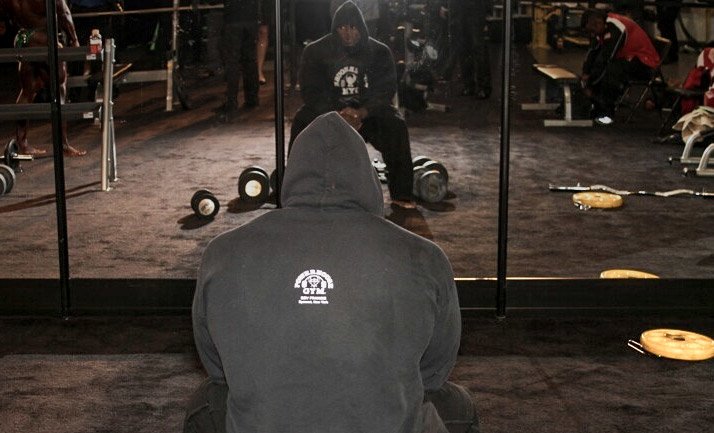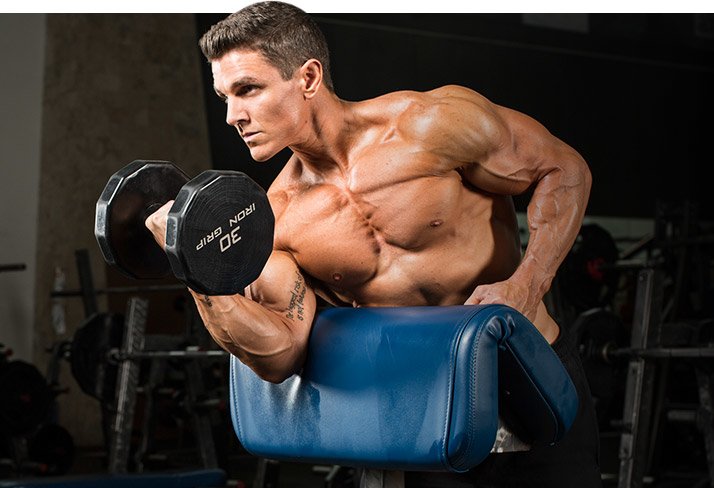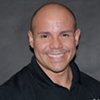
Are Bodybuilders Prone To Body Dysmorphia?
You lift to get big and lose fat. But what do you see when you look back in the mirror? Learn about body dysmorphia and why it might be especially problematic among bodybuilders.
When you consider body-image issues among athletes, your first thoughts might be of a female long-distance runner, a ballet dancer, or even a wrestler struggling to make weight. While eating disorders like anorexia nervosa primarily affect female athletes whose weight or image are important to their sport, body-image issues strike across multiple sports and certainly impact both genders.
The preoccupation with body image generally presents itself in two main forms: eating disorders (e.g., anorexia nervosa, bulimia) in which a person is preoccupied about the weight and shape of his or her entire body; or body dysmorphic disorder, in which a person worries about a physical defect other people cannot see.
One subtype of body dysmorphia is known as muscle dysmorphia, a condition that causes a person to obsess about his or her body or a part of the body as being too small. This is sometimes referred to as reverse anorexia nervosa.
Bodybuilding and Muscle Dysmorphia
Bodybuilders may be especially at risk for this particular condition, but muscle dysmorphia and other body-image issues aren't always easy to study—especially among nonelite populations. A study published in the Journal of Psychopathology investigated eating disorders in nonprofessional performers.1 In this study, 113 female nonelite ballet dancers, 54 female and 44 male noncompetitive bodybuilders, 105 female controls, and 30 male controls were evaluated for body-image issues and potential disordered eating behaviors.

Researchers concluded that nonprofessional athletes in sports emphasizing thinness or muscularity, like ballet and bodybuilding, show a high degree of body uneasiness and inappropriate eating attitudes and behaviors.
There have been a few other studies published over the last 25 years that have investigated body image among weightlifters. One study, published in the Journal of Comprehensive Psychiatry, revealed that out of 108 bodybuilders surveyed, 2.8 percent reported a history of anorexia nervosa; this rate is significantly higher than the rate of 0.02 percent reported among American men.2 Furthermore, 8.3 percent of the men in this study described reverse anorexia (muscle dysmorphia).
The Damage of Body-Image Disorders
The study reported that reverse-anorexic subjects often declined social invitations, refused to be seen at the beach, or wore heavy clothes even in the heat of summer because they feared that they looked too small; they also reported use of anabolic steroids. The authors concluded that disorders of body image, including both anorexia nervosa and muscle dysmorphia, may occur more frequently in men who lift weights regularly.

In another study published in the International Journal of Eating Disorders, a total of 139 men consisting of 43 bodybuilders, 48 runners, and 48 martial artists were surveyed with standardized measures of body dissatisfaction, drive for thinness, drive for bulk, bulimia, self-esteem, depression, maturity fears, and perfectionism. They were also given questionnaires designed to measure attitudes toward steroids and rates of steroid use.3 Bodybuilders reported significantly greater body dissatisfaction with a high drive for bulk, high drive for thinness, and increased bulimic tendencies than either of the other athletic groups.
Moreover, bodybuilders reported significant elevations on measures of perfectionism, ineffectiveness, and lower self-esteem. They also reported the greatest use of anabolic steroids and most liberal attitudes toward using steroids. The results suggest that male bodybuilders are at risk for body-image disturbance and the associated psychological characteristics that have been commonly reported among eating-disorder patients. These psychological characteristics also appear to predict steroid use in this group of males.
Beating Body-Image Issues
Research seems to suggest that many physique athletes are affected by body-image issues, so don't be afraid to voice any concerns you might have. It's much better to seek help than stay silent. And, while it's not uncommon to be self-conscious about your body, there's a fine line when it comes to being obsessive or destructive.

It's normal to get inspired by a fitness model's physique, but it's essential to remember that most fitness models don't walk around in tip-top shape year-round. In fact, they often take an adequate amount of time to prepare for a photo shoot or physique competition, so don't berate yourself or belittle your own accomplishments if you don't have a six-pack 365 days a year.
Stay focused on your goals and your progress. Remember that fitness is supposed to be a healthy and positive pursuit. Get fit for you, not in pursuit of some unattainable ideal, and always be willing to listen to a friend who may be experiencing any of these issues.
References
- Ravaldi, C., Vannacci, A., Zucchi, T., Mannucci, E., Cabras, P. L., Boldrini, M., ... & Ricca, V. (2003). Eating disorders and body image disturbances among ballet dancers, gymnasium users and body builders. Psychopathology, 36(5), 247-254.
- Pope HG, (1993). Anorexia nervosa and reserve anorexia nervosa among 108 male bodybuilders. Comprehensive Psychiatry 34(6): 406-409.
- Blouin, A. G., & Goldfield, G. S. (1995). Body image and steroid use in male bodybuilders. International Journal of Eating Disorders, 18(2), 159-165.
